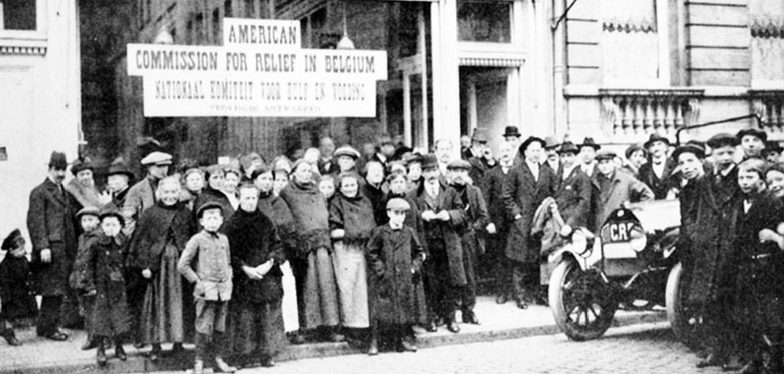US Humanitarian Relief for “Poor little Belgium”

The invasion of Belgium by the German Army in August 1914, the heroic defence of the fortified position of Liege by the Belgian Army against a massive attack launched by the Germans, associated with unspeakable assassinations of Belgian civilians and the arson of the medieval library at the University of Louvain by the invading troops, paints a bloody portrait of German barbarity that shocked countless people in the US. Mass-circulation newspapers in the US presented Belgium as the modern-day Sparta and compared its king, Albert, to King Leonidas I.
The occupation of nearly the entire territory, with the exception of the Ypres Salient, as well as the continental system decreed by Great Britain, during which time Belgium depended on imports for three-fourths of its supplies, quickly brought about severe food shortages and the threat of widespread starvation. In order to avoid the tragedy, a US mining engineer with an enormous heart, Herbert Hoover, put together the humanitarian aid organisation “Commission for Relief in Belgium”, which successfully lead an unprecedented supply campaign in the Belgian and French territories under German occupation.
Up until recently, World War I specialists have generally ignored the humanitarian dimension of US “engagement” in the conflict. Now, historians systematically study the characteristics of humanitarian relief carried out during the war. Humanitarianism lead to the US decision to enter the war, influenced its path and inspired the war objective defined by President Woodrow Wilson, aiming to protect the “small nations” such as Belgium and Serbia who faced looting by the invading forces.
“Poor little Belgium”: A recurring theme of anti-German propaganda by the US; even in 1917, after their landing in Saint-Nazaire, films about the invasion of Belgium were shown to future military personnel for Uncle Sam.